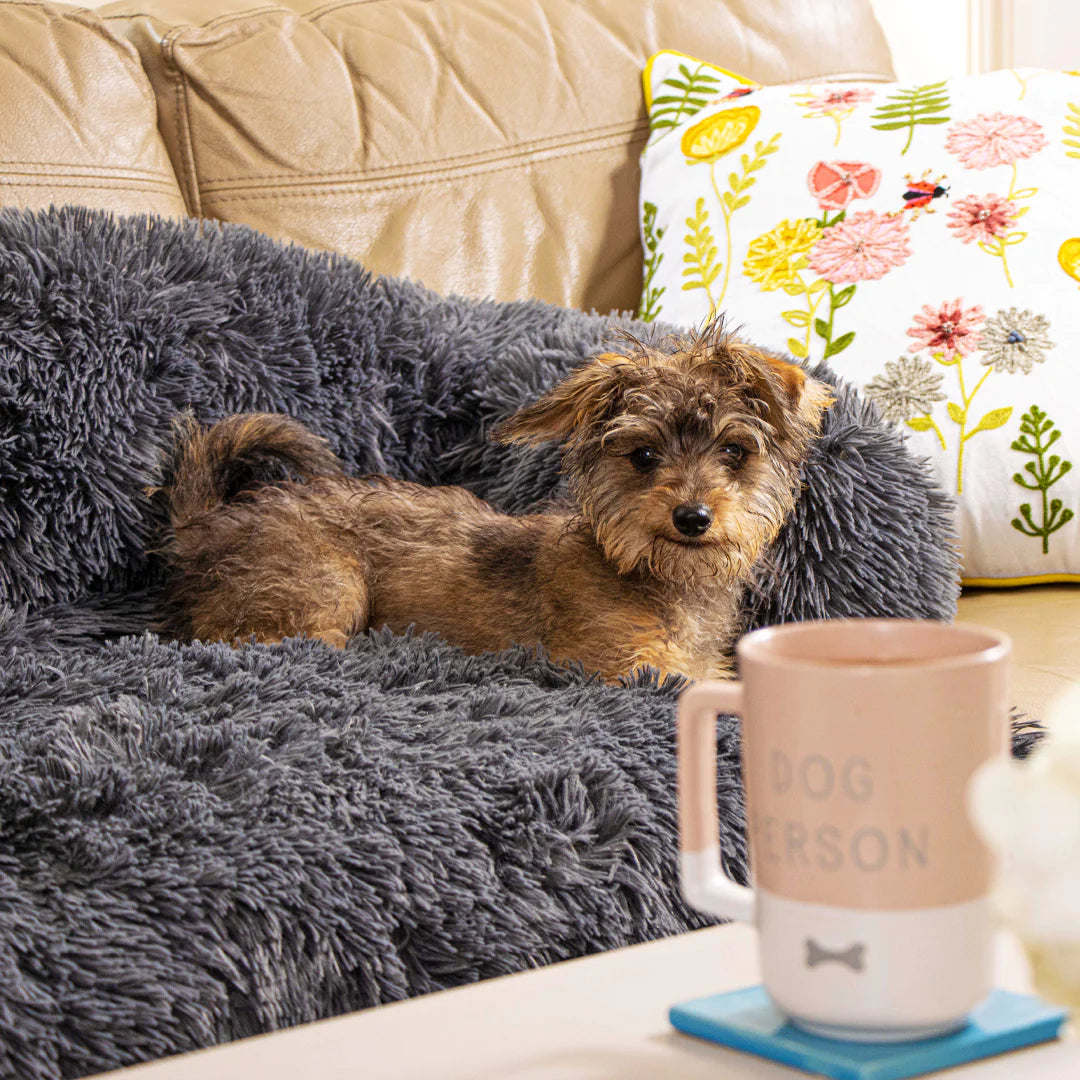 If you've ever found yourself contending with a restless pup who insists on sharing your bed at night, you're not alone. Many dog owners have faced the challenge of getting their furry companions to sleep in their own beds.
If you've ever found yourself contending with a restless pup who insists on sharing your bed at night, you're not alone. Many dog owners have faced the challenge of getting their furry companions to sleep in their own beds.
While it's adorable to snuggle up with your four-legged friend, co-sleeping with your dog can lead to disrupted sleep and potential behavioural issues down the line. Luckily, there are some effective strategies and techniques for how to get a dog to sleep in its own bed peacefully.
Today, we'll explore a range of tips and tricks to help you achieve a restful night's sleep for both you and your pup. Whether you're a new dog owner or just looking to change your dog's sleep habits, read on to discover the secrets to a cozy, peaceful night for everyone involved.
Why Won’t My Dog Sleep in Their Own Bed?
Before we discuss how to get a dog to sleep in its own bed, let’s first look at the reasons why you might be having difficulty convincing your dog to snuggle up on their own.
Understanding the Pack Mentality
Dogs are descendants of pack animals, and this pack mentality can play a significant role in their reluctance to sleep in their own beds. In the wild, dogs would sleep huddled together with their pack for safety and warmth. It’s important to understand this when training a dog to sleep in its own bed.
Your home has become their modern-day "pack," and sleeping close to you might make them feel secure and protected. Your dog may view sleeping next to you as a way to reinforce their bond and connection with you, which can make it hard for them to move to their own sleeping space.
Previous Experiences and Bed Associations
Your dog's past experiences and associations with their bed can also influence their sleep behaviour. If they've had negative encounters in their bed, such as discomfort, unpleasant smells, or loud noises nearby, they may avoid it altogether.
Also, if they've had positive experiences sharing your bed, like receiving attention, pets, or treats, they may have learned to prefer your bed over theirs. Understanding your dog's history and any past traumas related to their bed can help you understand their reluctance to sleep alone.
External Factors Influencing Sleep Behavior
External factors in your dog's environment can play a significant role in their decision to sleep in their own bed. Dogs are sensitive to changes in their surroundings, and factors such as temperature, noise levels, and the presence of other pets can impact their sleep preferences.
If their bed is located in an uncomfortable or noisy area of your home, they may naturally seek out a quieter, more comfortable spot, which could be your bed. And, if they sense the presence of other animals in or near their bed, they may be reluctant to use it.
Dogs will also avoid beds or sleeping areas that aren’t comfortable enough. If your dog recently won’t sleep in their own bed, they may have a joint issue that’s causing them discomfort when they lay down. Learning how to get a dog to sleep in its own bed starts by making sure they’re comfortable.
Wondering how to improve dog joint health or what can I give my dog for joint health? A comfortable, ergonomically designed bed is sometimes the best natural joint supplement for dogs, especially if you observe painful symptoms like your dog’s swollen front leg joint.
Can I Train My Dog to Sleep in Their Own Bed?
Is training a dog to sleep in its own bed an option? If you’ve decided it’s finally time to get your dog sleeping in their own bed, you can certainly start training them to do so. Here are some tips for how to train a dog to sleep in its own bed.
The Importance of Consistency in Training
Consistency is key when it comes to training a dog to sleep in its own bed. Dogs thrive on routines and clear boundaries, so it's essential to establish a consistent bedtime routine when learning how to train a dog to sleep in its own bed.
Choose a comfortable and appropriate bed for your dog and place it in a consistent location in your home. This will create a designated sleeping area they can associate with rest.
Dogs appreciate predictability, so establish a consistent bedtime and stick to it as closely as possible. This helps regulate their internal clock and encourages them to settle down in their own bed at the designated time.
Use clear cues or commands that signal it's bedtime, such as "bedtime" or "go to your bed." Be sure to use the same command each night. While it's tempting to let your dog sleep with you on occasion, avoid making exceptions. It can confuse your dog and undermine your training efforts.
Positive Reinforcement and Reward-Based Training
Positive reinforcement is a highly effective training method when encouraging your dog to sleep in their own bed. Instead of punishing undesirable behaviour, focus on rewarding and praising your dog when they follow your instructions.
When your dog willingly goes to their bed or stays there throughout the night, offer verbal praise and small treats as a reward. Positive reinforcement will create a positive association with their bed.
Learning how to get a dog to sleep in its own bed takes time, and every dog is different. Be patient and persistent in your efforts. Your dog may need some time to adjust to the new routine and sleeping arrangement.
How to Get Dog to Sleep in Own Bed: Tips on Training Dog to Sleep in Own Bed
As well as training a dog to sleep in its own bed, there are a few other things you can do to encourage your dog to use their own bed instead of yours. Here’s how to get a dog to sleep in its own bed.
Start By Investing in a Quality Bed They’re Going to Love at Mighty Munch
The foundation of successfully training a dog to sleep in its own bed starts with the bed itself. Make sure you have a comfortable, cozy bed your dog will feel safe and secure in. At the same time, make sure your dog’s bed is ergonomically designed to protect their joints while they rest.
At Mighty Munch, our calming dog bed is specially designed with a raised rim on the back that provides a sense of security. It’s made from snuggly, soft fabric to make your dog feel both comfortable and safe. It’s also machine washable for your convenience!
If you’re wondering how to help a dog with arthritis, or looking for a dog joint pain home remedy, the best dog calming bed in Australia from Mighty Munch is just what you need for safe, effective dog joint care and for training a dog to sleep in its own bed.
Start Small with Nap Time
If your dog is used to sleeping with you, consider a gradual transition. Start by having them sleep in their own bed for naps or part of the night and gradually extend the duration until they are comfortable sleeping there full-time.
Place the bed in a quiet and familiar area of your home where they can relax without distractions. Be patient and use treats or gentle praise to reward them when they comply. Over time, gradually extend the use of the bed to nighttime.
Add Personal Items for Comfort
Once you’ve invested in the best dog bed in Australia from Mighty Munch, place familiar and comforting items in their bed, such as their favourite toys or a blanket with your scent. This can make the bed more inviting and appealing to them.
Addressing and Resolving Sleep Disruptions
During the training process, you may encounter sleep disruptions or resistance from your dog. Even if you do, the show must go on! Maintain a consistent bedtime routine and use the same cues or commands every night to signal it's time for bed.
If your dog whines or paws at your bedroom door to gain access to your bed, avoid giving in to their demands. Responding to their behaviour with attention can reinforce it. Instead, wait for a moment of quiet and reward them when they settle down in their bed.
Often, dogs resist their bed because it’s not comfortable enough for them. Using an ergonomically designed calming dog bed from Mighty Munch can provide the best joint pain relief for dogs, keeping your dog relaxed and comfortable as they rest.
Final Thoughts on How to Train Dog to Sleep in Own Bed
So, that wraps up our guide on how to train a dog to sleep in its own bed. While sleeping with your dog can be comforting for you both, it’s not always convenient. With a comfortable, soothing dog bed you can re-claim your own covers as your pup happily snuggles down on their own.
At Mighty Munch, our calming dog bed is the perfect tool for training a dog to sleep in its own bed. It’s ergonomically designed and made from soft, soothing material that will make your pup feel like they're snuggling with their pack.
As well as having the best calming dog bed, Mighty Munch is also your one-stop shop for Australian dog supplements, including dog joint supplements, top-rated collagen for dogs, and our potent dog probiotics, designed by vets for your dog’s health and safety.
Shop Mighty Munch for everything you need to keep your dog healthy, happy, and sleeping in their own bed!


